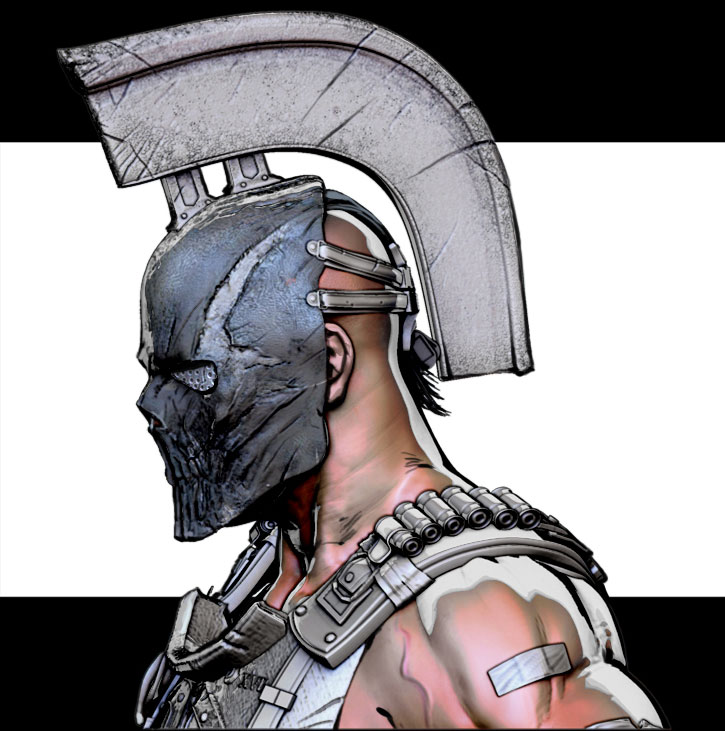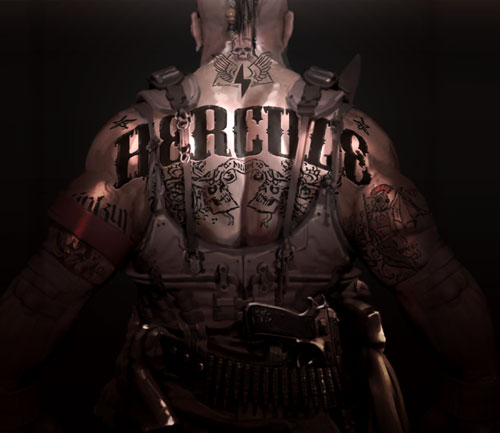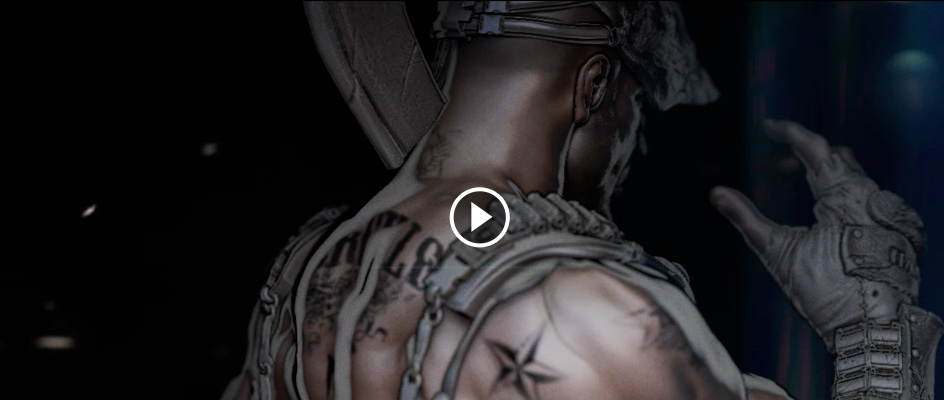How do you split the tasks within the team? Do you have a particular workflow to manage them? As I mention earlier, Morvan is really in the script part and the decisions stage, specifying what happens in which panel. Then Looky comes next and does the design/layout for the panels. There is of course a lot of back and forth between them resulting in changes based on their discussions.
Then comes the implementation phase with a mix of work between Looky and myself for the environment, the posing with ZBrush (and Transpose Master!), the compositing, the rendering and ultimately the final assembly.
But it's really a team effort with plenty of back and forth between us.


Why did you choose to take a risk of creating a comic made in 3D rather than in a traditional way? Was it for the graphic style, for productivity? The 3D was a selling point to the editor for this project. We didn't want to do a one shot album and wanted to minimize the risks. It's also why we have a dedicated writer!
The big advantage of working in 3D is the productivity gains that it can bring over the long term. The first volume requires a lot of work to prepare the characters and the various assets: spaceships, environments, props and more. That took a period of approximately 3-4 months. But once the preproduction is done, it is very fast to produce each page. There’s also more freedom to test out different changes without risks.
For your information, we can produce approximately four pages per week. That is really fast for a production that has so many small details!
In a few words, what is your workflow for producing an image from the beginning to the end? It begins with a sketch by Looky. Next comes sculpting with ZBrush and sometimes a little Maya for some hard surface parts.
I then start the texturing/painting process where ZAppLink is mandatory for me! It allows me to work with Photoshop and have a lot of flexibility for this task. Of course, I'm doing a lot of back and forth between ZBrush and Photoshop. I’m also in constant communication with Looky and Morvan to get feedback on my work.
After that comes the posing in ZBrush. Like I mentioned indirectly before, I bless TransPose Master. Without it, I don’t think that this project could have ever been done. My Tools have a large number of SubTools and posing is a real pleasure with this plugin.
I have to say that the posing is first done on low resolution meshes without renders, like we do in animation with animatics. As with everything else, there is considerable back and forth between the team to validate this step.
Then comes the final render. The technique here is the same as for Henk. I prepare all my layers by using various MatCaps. One simulates the inking, one for the shadows, one for the specular highlights, etc. With each pass I use ZAppLink to send the ZBrush screenshots in Photoshop... all without using the BPR! My final images are only composite images made from ZBrush screenshots. They’re not even renders!
Finally, in Photoshop I composite all the ZBrush-created layers to create the final "render".



When the compositing is done in Photoshop, what is then done on the produced images? Is there some overlay drawing, or just work on the overall picture?
Of course we do edit the final images, but it is mostly quite small details. This is mainly to enhance or improve something, such as a corner of a mouth to create a better smile.
Does this project exist because ZBrush allows it to be done? What I mean is, could this project have been realized with another 3D creation tool? In fact, before finding ZBrush I had been thinking about the creation of comics, but without much conviction. Then I discovered TransPose Master and it triggered various things. In addition, thanks to the freedom of creativity when working with ZBrush, its accuracy and the fact that it brings this traditional feeling to the digital world, a project like this became very possible to jump into without fear. In fact, it’s the opposite of fear!
In addition, ZBrush’s MatCaps allow me to produce the final "rendering" without waiting for hours like other rendering engines require!
So yes, this project would not have been possible without ZBrush!
Would you say that your use of ZBrush features is standard, or do you end up using a maximum of functions and tools?
In truth, I always come back to my old habits and haven’t really explored all the possibilities that ZBrush offers to me. Although recently I tried the new IMM brushes with the TriPart option -- especially those by Etcher -- and it's awesome!
ZBrush 4R4 brings the Mesh Fusion feature, as well as Mesh Insert additions. Was this a big contribution for you?
For the Hercule project, these additions weren't available yet! Right now, it is important for me to work with SubTools. I prefer having a lot of SubTools rather than a single Tool. The reason is quite simple: Transpose Master! So for my needs it's better to minimize the insertions and maximize the SubTools.
However, it is important to keep in mind that these additions bring a lot of alternatives in various creation scenarios. It is one of the greatest strengths of ZBrush to have multiple ways for achieving a result and not be limited by one solution.
The recurring question: What is your favorite ZBrush feature and why?
In fact, it's not really a "function". It is simply the ability to use ZBrush with a pen tablet and have access to the pressure sensitivity. It becomes instinctive to create with ZBrush and it perfectly transcribes the artist’s sensitivity. It's a whole; not only the tablet of course, but the tablet with ZBrush that is able to create this feeling. I’m able to feel like and artist, rather than a technician!





